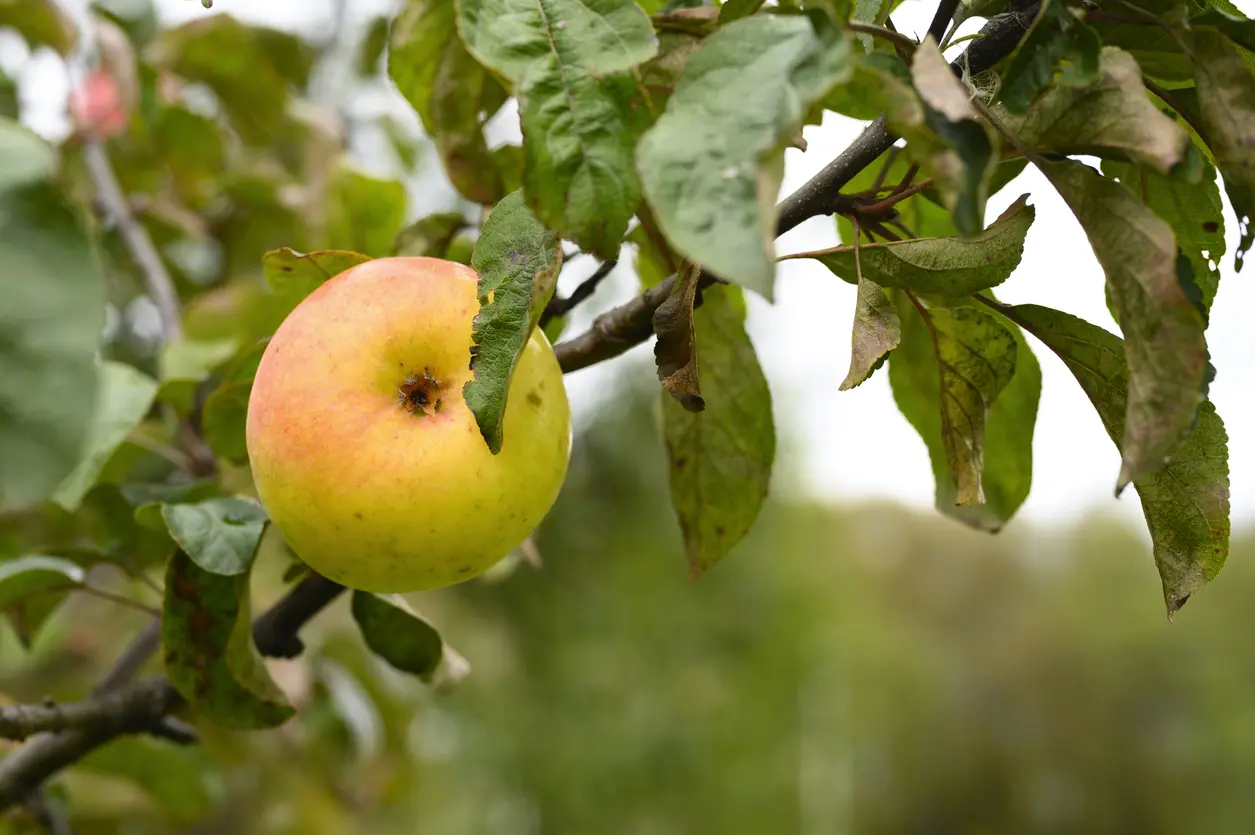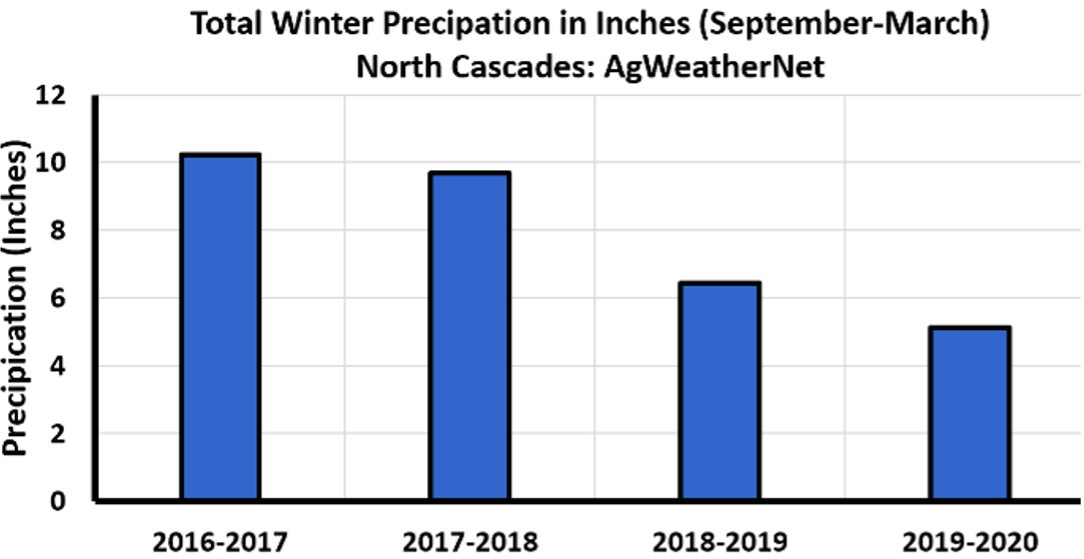
Postharvest Nutrition
For ideal results, incorporating nutrients back into the orchard postharvest is no different than any other time of the year except for timing. We’re on the clock. Irrigation is going to shut off in October for the irrigation districts. Without irrigation, we must rely on mother nature to incorporate nutrients that are heavily dependent on mass flow such as Nitrogen, Potassium, Calcium and Magnesium. With the decline in our winter moisture in the North Cascades over the last 6 years (Fig 1), we cannot rely on late fall rains as we once did, but we can rely on irrigation systems to do the work while they’re still active.

Figure 1
The trees have been stripping the soil of nutrients all season. Some of which, will be returned to the soil once the leaves drop and the culled fruit decomposes. The apples, pears, cherries, blueberries, etc.., are nutrient sinks and once they go into the bin and are hauled off, those nutrients are gone. The leaves themselves are also nutrient sinks but the nutrients will be reabsorbed into the tree before the leaves fall and whatever is left will be released as the detrius decomposes. In terms of nutrient requirements to produce 75 bins/ac, apple trees will require: Nitrogen – 66.4 lbs/ac, Phosphorus – 9.2 lbs/ac, Potassium 120.5 lbs/ac. However, harvest of 75 bins/ac will remove from the orchard: Nitrogen – 25.7 lbs/ac, Phosphorus – 6.6 lbs/ac, Potassium – 83lbs/ac (Lailiang Cheng, Cornell University). These numbers will not be true for all varieties and growing styles, but the loss of ½ to 2/3 of the nutrients required to grow the fruit at the time of harvest is something to keep in mind when planning for the upcoming season.
To successfully pull off a postharvest application there are a few items that need to be in place. A recent soil test and better yet, a soil test and a water test need to be sent off the to lab. Whether the source is a well, canal, river, etc… the dissolved nutrient load in the water itself will change throughout the year so have it tested as it might affect rates at application. A good soil test will reveal what needs to be reincorporated into the ground and fertilizer blends can be ordered. If the grower has been running injections all season or applied dry fertilizer multiple times throughout the year, they’re ahead of the game.
Next, and this is a big ask, with the fertilizer delivered and ready, apply the recommended rate as soon as possible. Instead of waiting until all of harvest is over, apply fertilizer as individual blocks are harvested. We’re still racing the clock but we’re really trying to get ahead of water shutting off and the root uptake slowing from cooler soil temperatures. How long of an irrigation set needs to be run and how often is quickly determined with soil moisture probes and Probe Schedule. If you need help reading the moisture graphs, your Soil Moisture Specialists will be happy to help but here’s the simple breakdown:
Determine root depth for how deep you want to push water, for this location we want the irrigation to push down to but not past 22 inches.

Figure 2
Water hits 2 inch sensor at 18:59

Figure 3
22 inch sensor begins to move at 1:58
7 Hour set needed to reach 22 inches.
At this location under these conditions, the grower will need a 7 hour sprinkler set to incorporate nutrients into the soil. There’s wiggle room of about an hour here but more than that and we’re dealing with leaching of nutrients past the rootzone rendering them unavailable to the tree. Postharvest we’re generally facing lower evapotranspiration due to lower temperatures and decreased vigor and this isn’t the time to overirrigate. In the fall, conditions allow for soils to have a higher carrying capacity for moisture. To avoid oversaturation and leaching, irrigation lengths and intervals need to be adjusted accordingly and although it’s the end of the season and there are fifty different things that need to be done yesterday, this is our last chance to improve tree health. Ideal soil moisture percentages are still in that 85%-90% range for optimum nutrient and water uptake, so a grower might allow their block to dry down to the 75%-80% range before they apply fertilizer. This would allow the trees to maintain their vigor but when the grower irrigates to incorporate their nutrients, the water applied can easily raise the moisture percentages into the ideal range without overirrigating.
Something to consider on the soil moisture part of this is prior to water shut off, there’s a trend in these warmer/drier Falls recently that just before water is shut off, growers will run a long deeply saturating set. It’s understandable but the soil will only hold so much water and that late in the season the trees are generally shutting down and evapotranspiration has all but ceased. 100% field capacity is 100% and irrigating past full increases the risk of leaching and a loss off expensive nutrients. On the other end of the spectrum, if a urea fertilizer is applied in the late fall or early spring when irrigation is off, and there isn’t sufficient rain or snowmelt to incorporate the N in a timely fashion, up to 40% can be lost to volatilization.
The goal of all of this is to maximize inputs. Applying proper rates of fertilizer while the trees are still active and will uptake nutrients, timing the applications when trees are at their weakest, using proper irrigation practices to deliver nutrients to the roots and avoiding loss of nutrients to the environment. The extra effort, although inconvenient, will return the investment through the long term health of the orchard.
Curtis Pusey, Irrigation Water Management Specialist

